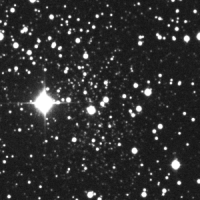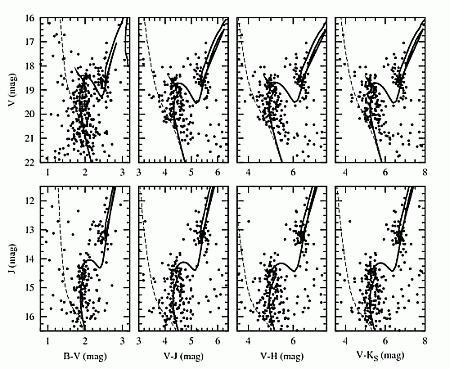 | |||||
|
| |||||
|
|
Berkeley 53 consists of stars fainter than V=18 mag and is located in the vicinity of the bright, foreground star HD 199578. This makes photometric observations of the cluster difficult. We derived its fundamental parameters, such as the age, the interstellar reddening, and the distance from the Sun, based on BV photometry combined with near-infrared JHK data. The structure and the mass function of the cluster were also studied and the total number of members and the total mass were estimated. The cluster was found to be a rich and massive stellar system, located in the Perseus Arm of the Milky Way, 3.1±0.1 kpc from the Sun. Its age exceeds 1 Gy but it seems to be very young in the context of its dynamical evolution. The analysis of the two-color diagrams and color-magnitude diagrams indicates that the cluster is significantly reddened. However, both methods resulted in different values of E(B-V), i.e. 1.21±0.04 and 1.52±0.01, respectively. This discrepancy suggests the presence of an abnormal interstellar extinction law toward the cluster.
| ||||
|
Full paper/manuscript | |||||
|
| |||||
|
Available data | |||||
|
| |||||
|
Last modified: Aug 20, 2009 | |||||

